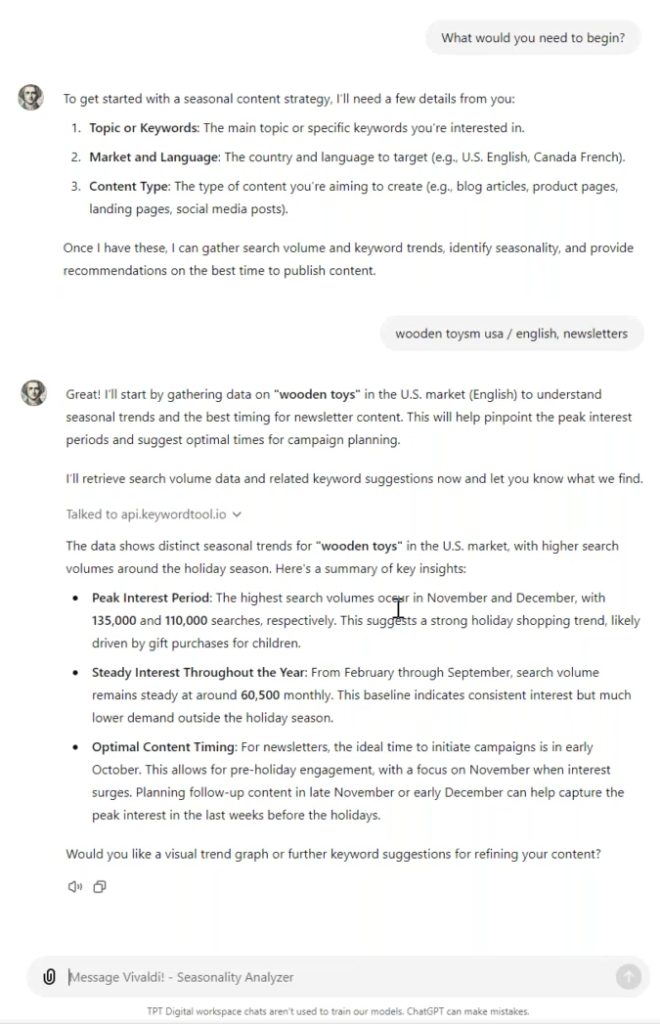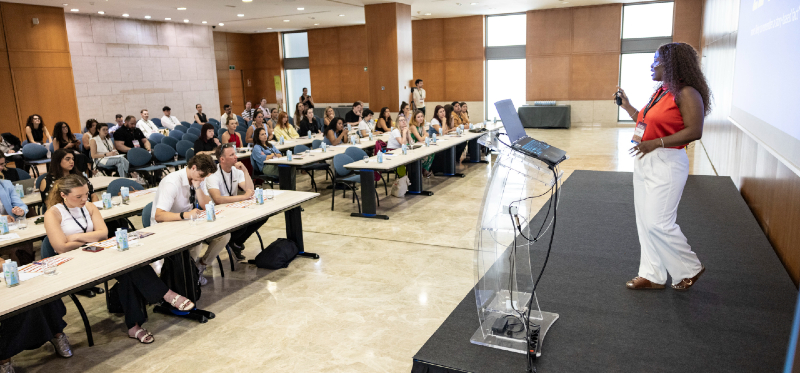
As generative AI evolves and develops at a rapid pace, businesses must consider how they can adopt this technology and integrate it into their marketing and content strategies to avoid being left behind.
Recently, I had the pleasure of co-presenting a webinar with Julie Franck, where we explored the fascinating world of generative AI in content creation. If you couldn’t make it, don’t worry – you can still catch the recording by clicking the banner below. In this blog post, I’ll also be sharing some of the key insights from our session. Let’s dive in!

Glossary of key terms
We began with a brief overview of essential AI terminology to set the stage:
- Generative AI: A type of artificial intelligence that creates new content – such as text, images, videos or music – by analysing and learning from extensive datasets.
- Pre-trained model: An AI model trained on large datasets to understand general patterns and relationships, providing a strong foundation for further customisation.
- Transformer: The technology behind many generative AI models, using self-attention mechanisms to process sequential data and understand complex relationships.
- Prompt: The input or instructions you provide to an AI model, guiding the output to align with your goals. A well-crafted prompt is critical for achieving optimal results.
- CustomGPT: A tailored generative AI model designed for specific tasks, industries or creative styles, fine-tuned to align with your unique needs.
How to scale generative AI in your content workflow
In the webinar, we explored a straightforward three-step process to scale generative AI in your content workflows:
- Testing: Start small by applying AI to high-volume, low-value tasks. This allows you to understand the tools, experiment with their capabilities, and refine your approach without significant risk.
- Pilot projects: Choose a specific content area to focus on, train the AI with clear guidelines, and involve human oversight to validate the results. Monitor key metrics like production time and quality to ensure the process meets your standards.
- Scalability: Once you achieve consistent, high-quality results, expand AI’s role across your content production. Continuously track performance metrics and make adjustments to optimise efficiency and maintain quality.
💡 Webinar insight: In one of my projects, implementing AI saved 30 hours of production time – a significant resource gain that was reinvested into more strategic and creative initiatives.
By scaling AI, you can simply do a lot more, whilst still retaining quality (thanks to the humans in the loop) and smartly reinvesting the time and money saved.
Challenges with generative AI
Whilst generative AI offers incredible potential, it’s essential to navigate the challenges effectively:
- Accuracy and quality: AI isn’t perfect and may produce inaccurate or irrelevant outputs (“hallucinations”). Human oversight remains critical to ensure accuracy and quality.
- Creative depth: Whilst AI is excellent for ideation and generating drafts, it struggles with nuanced storytelling or emotional resonance. These elements require a human touch.
- Prompt sensitivity: Poorly constructed prompts can lead to subpar outputs. Think of your prompt as a briefing document for a new colleague – clear, detailed instructions are essential.
- Mindset shift: Embracing AI can feel daunting, but it’s important to view it as an enhancement to your capabilities, not a replacement. AI is a tool to help you focus on higher-value, creative and strategic tasks.
Benefits of generative AI
If you can overcome the challenges, the benefits that generative AI can offer are plentiful, such as:
- Efficiency and speed: AI performs repetitive tasks quickly and at scale, significantly improving productivity.
- Personalisation: Create AI solutions tailored to your specific needs, such as content optimisation, keyword analysis or copywriting support.
- Consistency: Unlike humans, AI produces consistent results without the risk of fatigue or distraction.
- Inspiration and ideation: Use AI to kickstart the brainstorming process, generating ideas and rough drafts that can be refined by human creativity.
Example: An agentic seasonality analyser
During the webinar, I shared an example of a tool I developed – an agentic seasonality analyser that simplifies content planning by leveraging advanced AI capabilities and API integrations:
- How it works: Users input keywords, target markets, language preferences and content types. The tool then retrieves data through an API call to Keyword Tool IO, tapping directly into real-time keyword trends.
- What it does: Using the retrieved data, the AI analyses seasonal keyword trends to identify the best times to publish specific content. This ensures your strategy aligns seamlessly with audience behaviour and seasonal demand.
What makes this tool truly agentic is its ability to integrate and process live data from external sources, such as Keyword Tool IO. This dynamic capability allows it to provide precise, data-driven recommendations tailored to your unique needs, streamlining the traditionally complex process of content scheduling and planning.

Want to learn more about how to leverage generative AI in your content strategy?
We can help you to build generative AI solutions to meet your specific business needs. To learn more and have a no-obligation chat about how generative AI could help your business, get in touch with us today!
And if you want to watch a recording of the webinar that this blog post is based on, check out the webinar recording here!







